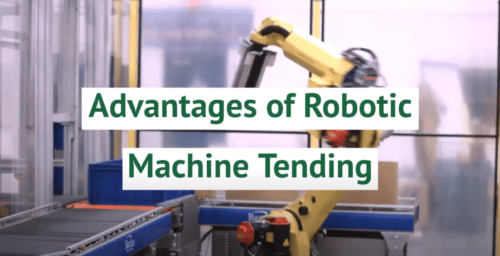Industries around the world are turning to robotic machinery as they seek to reap the benefits of the fourth industrial revolution. Robotics make production processes more efficient, safer, and more cost-effective while reducing waste. Even facilities with existing automation technology can realize new benefits as robots become more intelligent and capable of handling multiple tasks.
Let’s take a closer look at the advantages robotic machinery can provide to your production facility.
Consistent High Quality Production
A guarantee of consistent quality is one of the most significant benefits offered by robotic machinery. Human operators may become tired or lose focus over the course of a shift, but robots will follow the same production orders repeatedly without variations in quality or accuracy.
Smarter, more integrated robots can also monitor the workpieces through the product cycle to check for errors and adjust their processes to compensate.
As robotic machinery continues to evolve, it takes on more tasks with less need for human intervention between each stage. For example, a completely automated process will move workpieces from one machine to another, properly place it for the next step, and inspect the finished piece for quality concerns.
CNC machinery and multi-purpose robots can produce goods using a variety of different tools and processes. Instead of having one robot that follows one unchanging set of directions per task, modern robotic machinery can fluidly change from one step to the next. Ultimately, robotics improve product quality by reducing defect rates and offering consistently reliable performance.
Decreased Production Costs
Robotic machine tending noticeably reduces production costs in two ways:
- Per-unit efficiency. Robots reliably produce goods with fewer errors. More comprehensive robotic setups can remove any risk of human error entirely. This lowers the per-unit cost of a production run. Even better, machinery can process raw goods and workpieces more precisely, resulting in less waste and tighter material estimates.
- Facility efficiency. Robots reduce the production costs of an overall facility. They can work 24/7 without flagging or pausing without incurring the same labor costs and overhead as human employees, such as health insurance, liability insurance, wages, and other costs. Facilities can increase production without increasing staff size, which in turn lowers administrative and HR costs.
Lights-out or dark factory manufacturing underlines this key benefit of robotic machine tending. Robots can operate without direct human oversight, so facilities can extend production hours through the night. Even better, the facilities don’t need to maintain the same conditions as human-operated facilities: the lights can be out, climate control can be adjusted to meet ideal production standards without catering to human comfort, and the facility has greater energy efficiency.
Many facilities, rather than operating on a continual lights-out basis, use the lights-out mentality between shifts so humans can reset the machine programs and move finished products off the factory floor. As robotic machinery continues to develop, these “lights-on” intervals will become increasingly unnecessary.
Multiple Specialized Machining Operations
As machinery becomes more complex and can learn larger sets of increasingly specialized skills, they can take on more tasks commonly reserved for skilled human employees. A complex robotic system can handle a variety of tasks, including:
- Welding
- Tooling
- Material handling
- Testing
- Packaging
- Dispensing
- Tracking
Using advanced robotic machinery that can handle multiple tasks doesn’t just give production companies the ability to add more services to their lists of offerings. Single robotic stations that can handle multiple tasks help to optimize in-demand floor space in a production facility.
Companies that invest in multi-functional robotics will realize financial benefits both immediately and in the long run over the life of the robotic systems.
Limit Hazardous Environment Exposure For Human Workers
Liability poses one of the largest risks for any manufacturing operation—specifically, the risk of injury to human employees in dangerous environments. Field production sites can be hazardous, unpredictable, and may expose human workers to dangerous chemicals or other environmental factors. Even controlled environments such as warehouses and distribution centers pose a large risk for companies due to the risk of repetitive stress injuries and workplace accidents.
Robotic machinery works unimpeded in potentially dangerous environments. Reducing or eliminating manual labor at industrial worksites is a great way to reduce overall expenses, legal liability, and associated healthcare costs.
Robotic Machine Tending at Hogge Precision
Robotic machine tending isn’t just a niche development for highly specialized production centers. It’s an integral part of the fourth industrial revolution and an accessible improvement for every production facility. Investing in robotics can increase production quality, reduce expenses, increase manufacturing capabilities, and reduce the risk of employee injury.
Hogge Precision specializes in producing high-quality CNC and screw-machined products, as well as value-added services. We have more than 30 years of experience completing custom projects and manufacturing complex parts for industry. With the addition of robotic machine tending, we continue to build on our reputation for quality and service. Request a quote today to source parts for your next project or to learn more about our services and capabilities.


Comments are closed